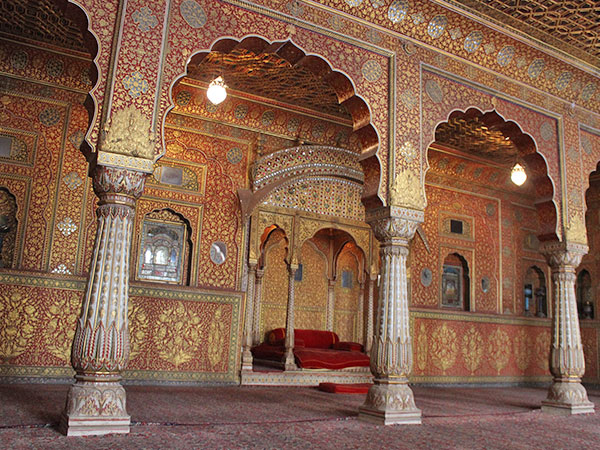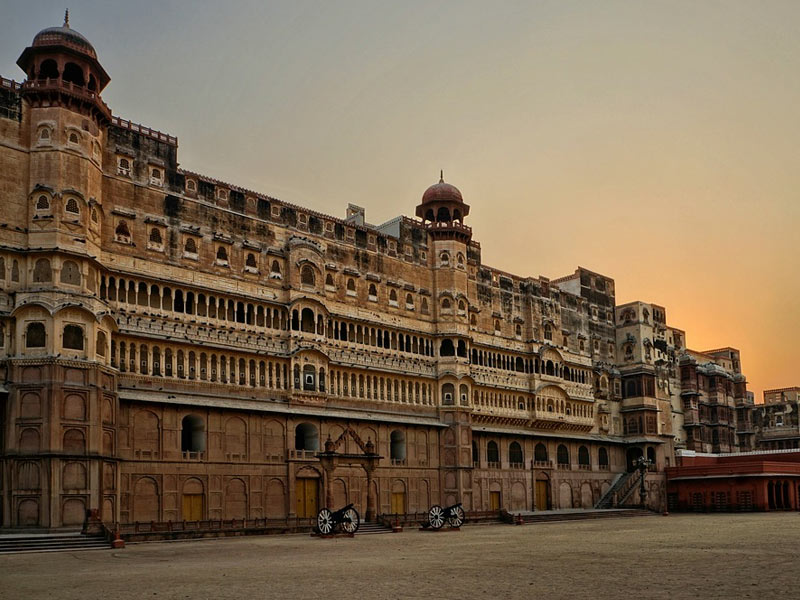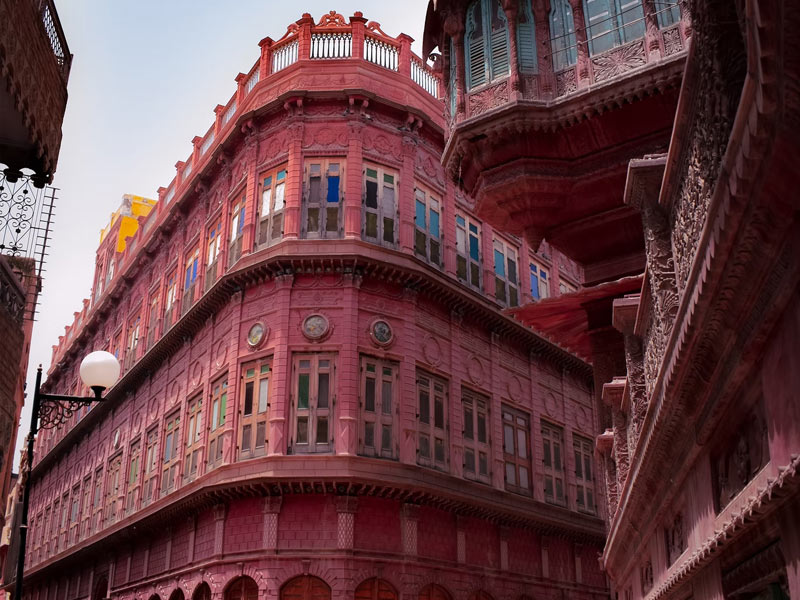
Bikaner
Bikaner - Nestled in the Thar desert, the ancient city of Bikaner is adorned with gigantic and spectacular forts and palaces. Heritage walk or a camel cart ride of the old part of the city, which stands as a silent witness to the rich history of the region, is a great way to soak in the traditional essence of the city.
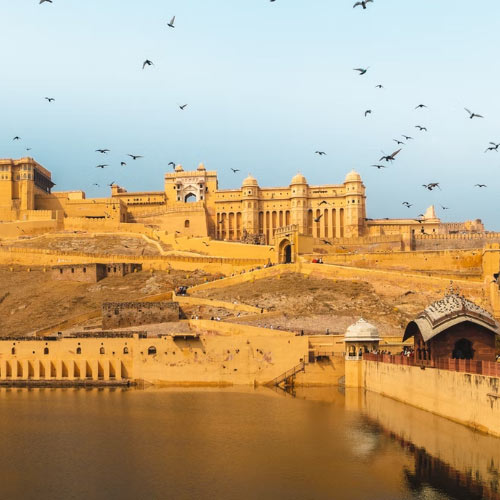
Author's India - Rajasthan and North
Delhi, Agra, Fatehpur Sikri, Chomu, Bikaner, Jaisalmer, Jodhpur, Ranakpur, Udaipur, Pushkar, Jaipur, Varanasi
13 Nights
Price on Request
View Tour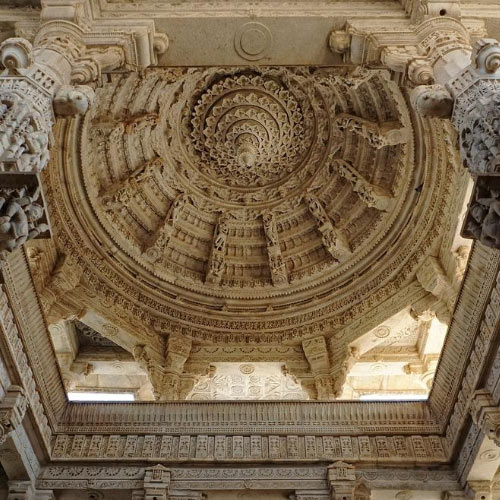
The Great Kingdoms - Rajasthan and Agra
Delhi, Agra, Chomu, Bikaner, Jaisalmer, Jodhpur, Ranakpur, Udaipur, Pushkar, Jaipur, Delhi
11 Nights
Price on Request
View TourGajner Palace Hotel
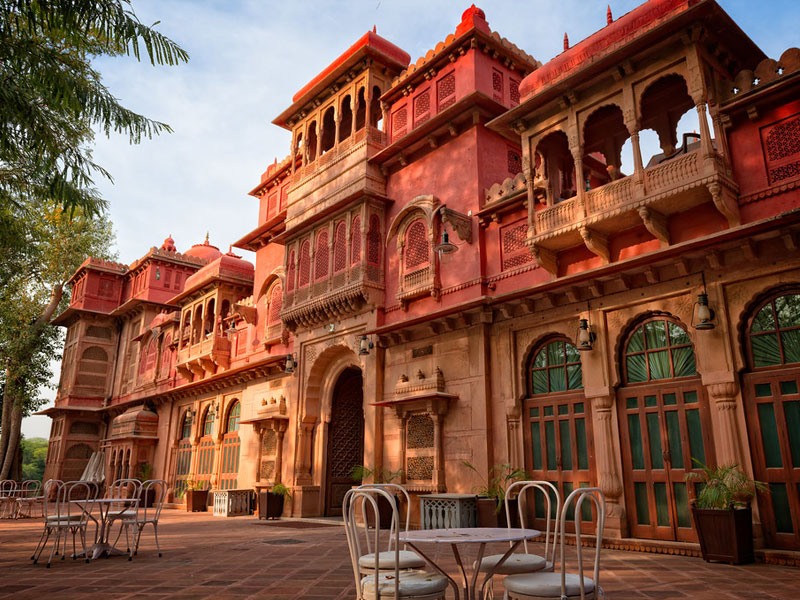
Gajner Palace Hotel
Gajner Palace is a jewel in the Thar Desert, built by HH Maharaja Sir Ganga Singh of Bikaner on the edge of a lake. The property was converted into a heritage hotel in 1976. The hotel's compound stretches over 6000 acres. The palace was primarily a hunting resort during the days of the British Raj and attracted several dignitaries, including the Prince of Wales in 1905, Governor General Lord Elgin, Lord Erwin in 1927 and Lord Mountbatten when he was Viceroy of India. The Imperial Sand Grouse shoots at Gajner Palace during the Christmas season was the most sought after invitation in the Indian social calendar.
The Lallgarh Palace
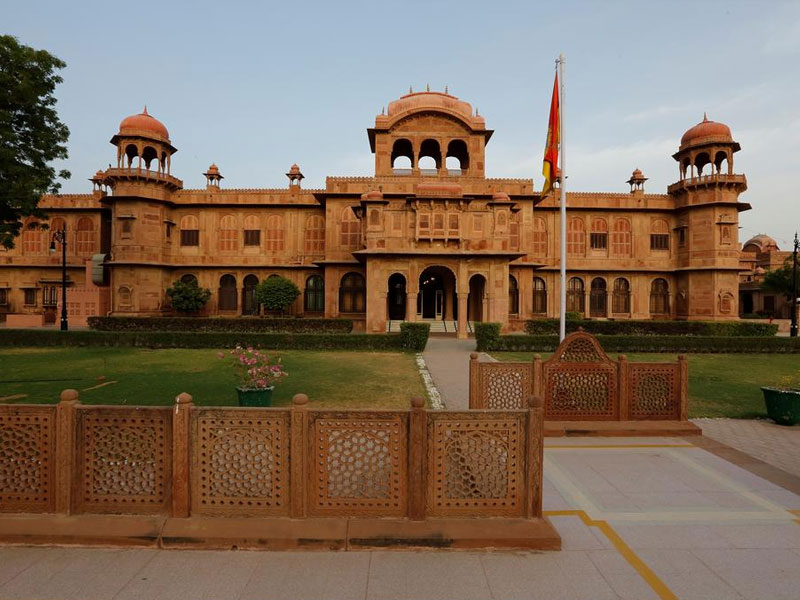
The Lallgarh Palace
The Palace has a surprisingly harmonious blend of east and west and is considered among the most remarkable royal residences built during the 19th century. Its Architect, Sir Samuel Swinton Jacob, valued the contribution of local Indian craftsmen. The result is a grand structure with classical Mughal and Rajput touches adorning the exterior, and British-inspired interiors, complete with billiard, smoking, and card rooms. It is said to be Jacob’s finest creation. The exterior of Lallgarh Palace is covered with impossibly delicate stone carving and has the distinctive hue of the red sandstone of the Thar Desert. The cupolas domes and balconies were carved by local craftsman with such delicacy that even today the solid red sand stone has the fragile appearance of lace. Today, two wings of the Lallgarh Palace have been reincarnated as luxury heritage hotel with 59 rooms that combine the best of modern conveniences with vintage furnishings. The Palace’s hallways are lined with charming sepia photographs and cherished hunting trophies. The grounds have lush, lavish gardens oft visited by peacocks and an indoor pool that completes the picture of a perfect desert oasis.
Bhanwar Niwas

Bhanwar Niwas
Situated inside the walled city of Bikaner is Bhanwar Niwas, the grandest of the famed havelis belonging to the Rampuria family. Bhanwar Niwas is a tribute and testimony to the skill and craftsmanship of the artisans of Bikaner. Completed in 1927 for Bhanwarlalji Rampuria, heir to a textile and real estate fortune, Bhanwar Niwas reflects the fashionable tastes of the 1920′s, a taste for formal and well ordered luxury with modern conveniences of the time. The architecture of the haveli is a fascinating mix of Indian and European styles.
Gaj Kesri
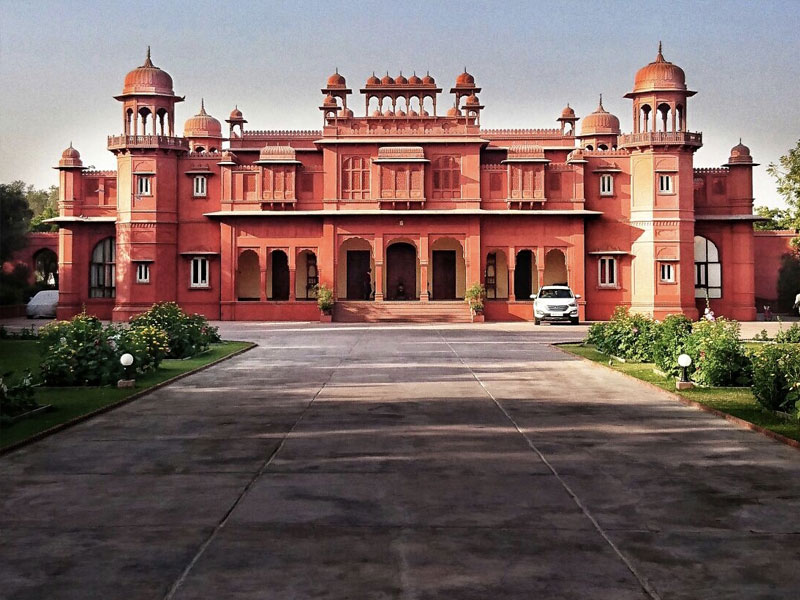
Gaj Kesri
Gaj Kesri is a small elegant hotel in the outskirts of Bikaner with easy access to the city and its chief attractions. The hotel houses a fine collection of art and local handicrafts and combines modernity and tradition to provide its guests a happy and comfortable stay. The hotel offers the most wonderful venues and catering for weddings and other events.
Narendra Bhawan Bikaner
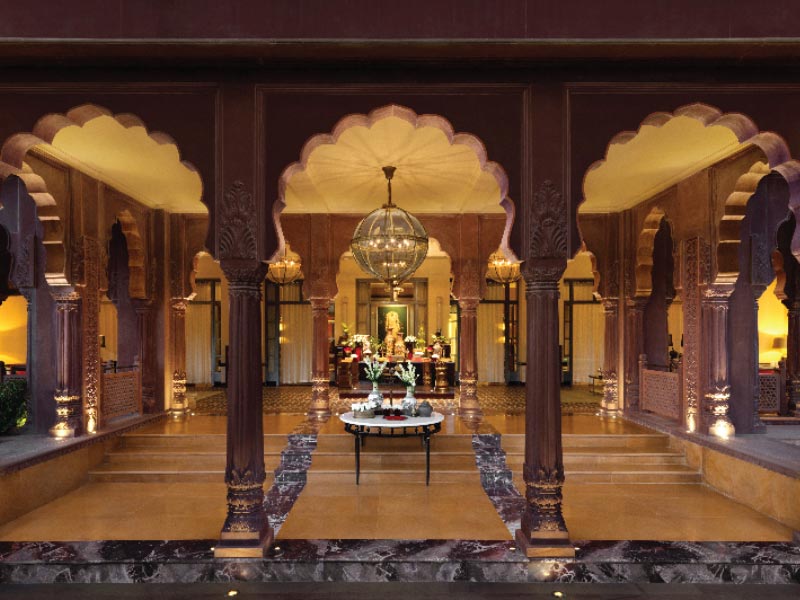
Narendra Bhawan Bikaner
A grand residence, Narendra Bhawan Bikaner is composed of Narendra Singhji’s memories from his travels to destinations near and far. Unconventionally curated, the Bhawan organically grew into a snapshot of the life of its original resident who upon spreading his wings was subconsciously casting a new modern identity for himself much like that of his mother country. A pulsating Bombay influenced by the burgeoning Art Deco movement, influences drawn from the glamour posts of Broadway; dark inviting caverns, rich velveteen fabrics, chiffons and pearls; utterly stylish – all added to the cornucopia that led to the fashioning of this, his private palace-residence.
The Laxmi Niwas Palace
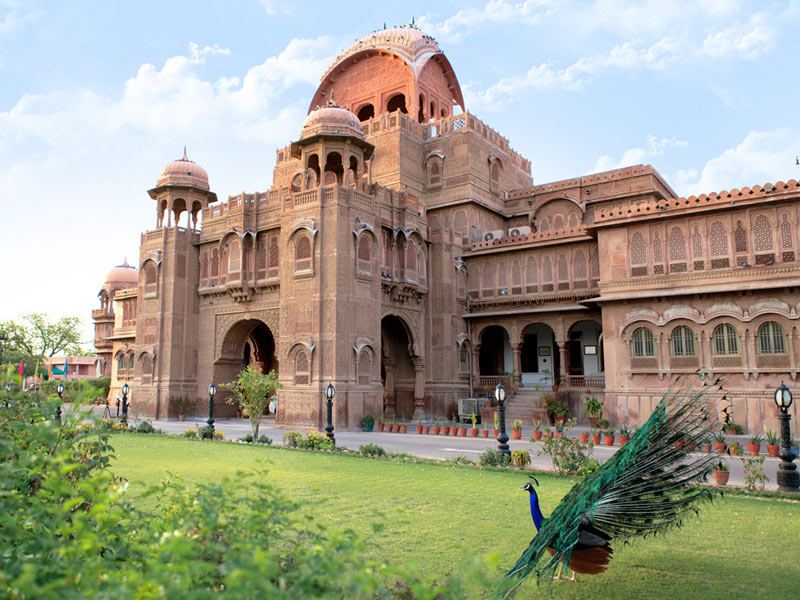
The Laxmi Niwas Palace
The Laxmi Niwas Palace was commissioned by His Highness Sir Ganga Singh Ji in 1904. The impetus behind it was two-fold – to provide employment to the townspeople and to create a stately residence worthy of the royal house of Bikaner. His Highness was a man of impeccable taste and supervised the artists, masons and builders personally in their endeavours. Many of the friezes on the palace’s walls, the geometrically perfect symmetry of its outlay, the ornate filigree work and latticed screens may all be attributed to his artistic vision and temperament. He was also a famous host and his guests, (nearly always royals or dignitaries with packed agendas) tended to overstay, sometimes for months longer than they had originally intended. We hope the grace and charm of His Highness’ former abode and our hospitality will have a similar effect on you.
